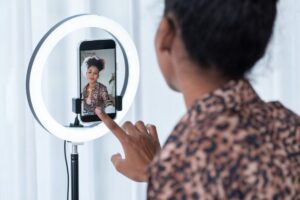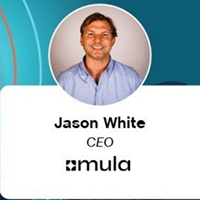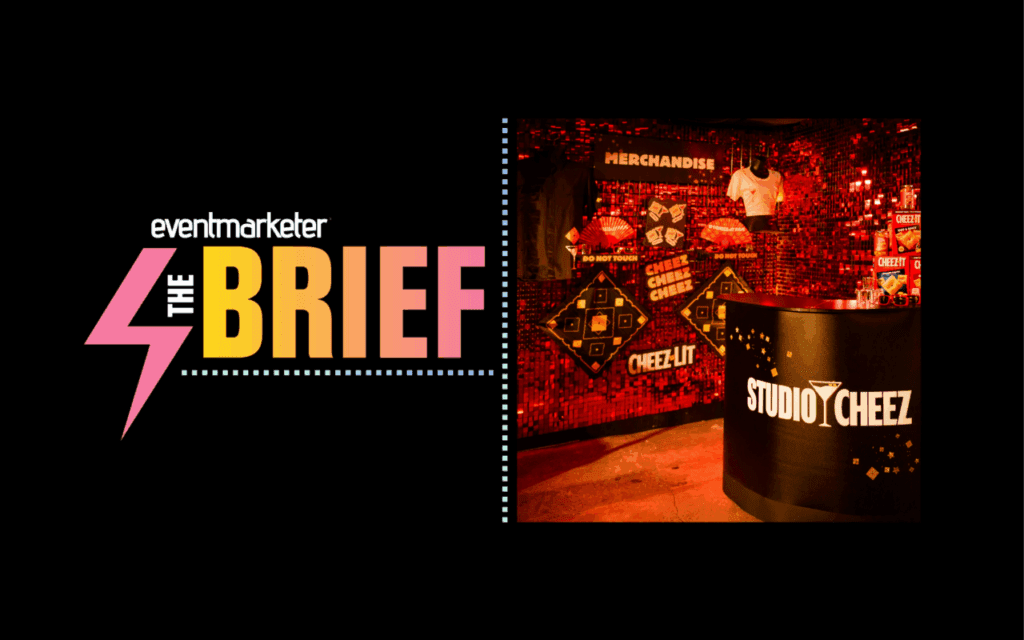
For B2B brands, engaging buyers in social conversations early in the buying process can help them get ahead of the competition. Videos are a key way to get them talking.
Video content can help bring a B2B brand’s story to life in social channels, and create connections in ways that more static content like whitepapers or blogs simply can’t accomplish.
Creating Connections
Electronic components distributor Avnet uses video as part of its social strategy, to help create engagement with customers and prospects. As part of its first-ever branding campaign last year, “Reach Further,” the company began posting videos highlighting unique customer success stories, such as one for Ubicquia, which embeds sensors in streetlights to help detect threats such as gas leaks, radiation and gunshots, and alerts response teams.
The case studies are shared throughout Avnet’s own social channels, as well as paid placements, says Kevin Sellers, the company’s CMO. “With these stories we’re able to create an authentic emotional connection, and get people interested in our products and services.”
B2B brands need to connect with prospects where they spend the most time, and more than ever, that’s social media. According to a recent survey by Pew Research Center, roughly three quarters of the public uses at least one social media site, with the average social media participant using three different sites. Roughly three-quarters of Facebook users—and around six in ten Snapchat and Instagram users—visit each site daily.
Healthcare IT company AthenaHealth uses data to create compelling content for social media. In its videos, rather than talking about the brand or its products and services, storytelling has become a more effective tactic, says Laura Longsworth, director of video at Watertown, MA-based AthenaHealth. “People respond better when we’re not trying to sell them things.”
More on Video Marketing:
- Amazon Goes Big in Jurassic World Video
- Animation Vs. Live Action: Which is Right for Your Business?
The video team works with the content team and marketing to create content based on data that is shared not only in social channels and on the company’s homepage, but on the AthenaInsight editorial newshub site as well.
“There was compelling data we could use to engage prospects to highlight the value of Athena’s network and how we interact with our clients, and build brand awareness,” says Longsworth, who spoke at the recent Brightcove Play event in Boston.
Indeed, data drives stories for the brand. For example, Athena had gathered a lot of data from the 114,000 healthcare providers it works with around the opioid epidemic. Nine videos and over 30 accompanying articles were created, to share across four social channels: LinkedIn, Twitter, YouTube and Instagram.
The brand broke down which areas were prescribing the most opioids, what the age spread was among the patients and in what areas prescription rates had dropped. This helped them identify who to contact to create compelling video stories, such as the story of a young Ohio mother-to-be who was addicted to opioids.
Many of the stories got picked up by industry publications and academic journals. It also helped Athena identify new sales segments that showed interest in the opioid-related content, such as small rural hospitals.
The brand distributes videos for social channels and AthenaInsight.com through Brightcove’s platform, to help track viewing data. In the past, the company distributed video through YouTube, but wasn’t able to get as much insight into what people were watching and responding to, Longsworth notes.
Video Drives the Message
A study from Mission Control Marketing and Researchscape showed that 83 percent of B2B decision makers use social media in their decision making process. Increasingly, video is becoming part of that mix: According to the Content Marketing Institute’s 2018 B2B Content Marketing Benchmark Report, 72 percent of marketers are using video as part of their content marketing strategy. Ninety-two percent are using social as a distribution channel for content. LinkedIn was far and away the most popular B2B social channel, with 97 percent of respondents, followed by Twitter (87 percent), Facebook (86 percent) and YouTube (60 percent).
Video is key to every PR launch recruiting agency Randstad does, and the format generates an 80 percent engagement rate. “It’s a core message driver for us,” notes Skyler Moss, senior director of content marketing at the company.
For example, an initiative last year focused on STEM, #bethecurious, launched with video, as did a global rebranding effort called Human Forward.
Randstad has a diverse audience. On the B2C side are individuals looking for new jobs. On the B2B side, some potential customers might be large companies looking for an entire workforce, say, 500 people to staff an entire new plant. Others might have simpler needs, such as 50 developers for a new project. The company also does data mining on the B2B side, to help companies gain intelligence into workforce trends, such as forces that drive employees to churn.
Retargeting is used to reach audiences on multiple social channels, including LinkedIn, Facebook and Instagram. Facebook advertising has also created a lot of audience engagement, he says, noting that Twitter is best for thought leadership types of campaigns, centering on HR practices and insights.
Video allows Randstad to tell a story in social. Illustrating the value proposition of working with a recruiter is a particularly popular topic. “Not everyone understands the benefits of working with a recruiter or being a contractor,” he says. “The engagement rates are the through the roof on those videos.”
User-generated content is also a significant part of the video strategy. UGC is crucial for Randstad, as the company has over 12,000 employees at 300 branches, with 12 lines of business to support—with only one full time videographer.
The best length for a video in social depends on the goal. Shorter can work better for lead gen, while those further down the consideration process might appreciate four minutes rather than 30 seconds.
Videos are published to social via Brightcove, which allows Randstad to aggregate social video stats from multiple sources in one place. PostBeyond is used to help employees find and share relevant links, videos and content with their own social accounts. Hubspot is core to reporting, primarily for lead flow to help accurately report metrics on social advertising, PPC, digital ads and other efforts.
The brand is still working on full-funnel reporting to determine the final conversion rates. “We need to know, what was the next step they took after watching a video,” Moss says. “Did they click on the link? What were the next four or fine steps? We need go deeper down the funnel. Did we close the account? What was the ROI?”
As video becomes more and more crucial, getting the right content in the right place at the right time is still essential, he says. “Sometimes it is a swing and a miss, but we’re getting better running super targeted campaigns.”

 Network
Network

